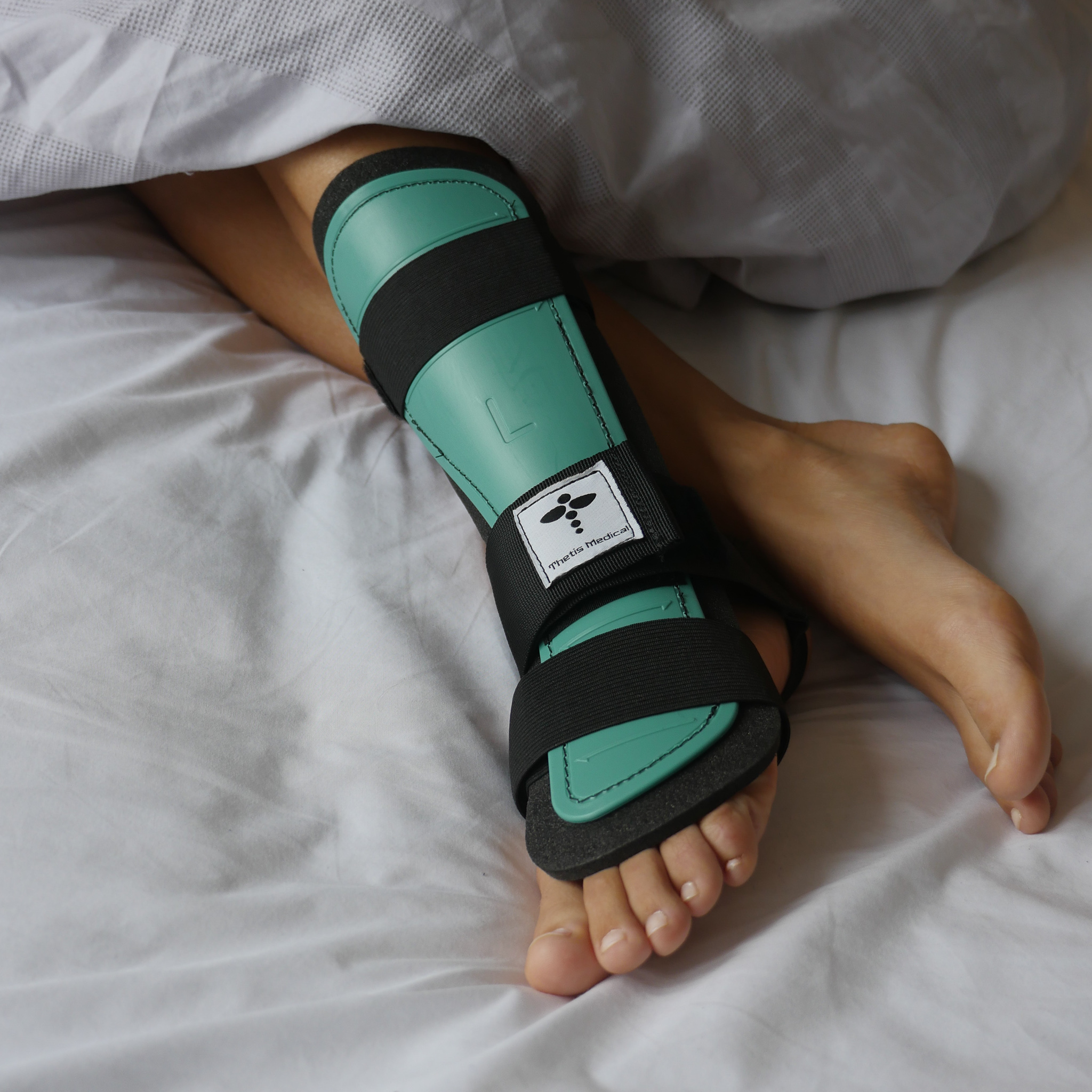DESIGNED ALONGSIDE SURGEONS TO IMPROVE ACHILLES RUPTURE RECOVERY.

The ONLY splint for post Achilles rupture recovery. Aimed to improve sleep and make recovery more comfortable.
Intended Use
Night-time splint to ensure the foot is kept in plantar flexion (foot pointed down) for the first 3 months after an Achilles tendon tear.
Testimonials

Simply brilliant - and brilliantly simple
Clinical Director, London Foot and Ankle Centre
Problem
Currently, patients wear a large, outdoor, orthopaedic boot, day and night, for the 10 week rehabillitation. This is analagous to wearing hiking boots for 10 weeks, and sleeping in them...
Patients find these boots:

Hot

Dirty

Uncomfortable

Heavy
Statistics
78% of patients found sleeping in the boot difficult and would therefore benefit from our night splint.


Solution (Patent Pending)
By sleeping and resting in a lightweight, comfort-focused splint, recovery becomes more bearable.

Cool

Contoured

Lightweight

Slim-line
Instructions
DO NOT STAND OR WALK IN THE SPLINT.
DO NOT OVERTIGHTEN THE STRAPS.
1. 1. Point toes then place shell on leg. Ensure you cover foot but not toes. Fastening patch sits over ankle joint.

2. Do up leg and foot straps firmly but not too tight.

3. Position heel in hole of the final (ankle) strap.

4. Fasten firmly but not too tight.

Sizing

Downloads
FAQs
Can you use the splint for Achilles tendonitis?
No, the splint is only used after rupture of the Achilles tendon. It is not suitable for broken bones, plantar fasciitis or Achilles tendonitis. The splint holds the foot pointed downwards, in a tip toe position, for tendon healing. For other conditions, like plantar fasciitis and Achilles tendonitis, there are different splints deliberately designed to do the opposite, and hold the foot up.
Can you use the splint instead of a boot?
Yes, it is designed as an alternative - but ONLY for use when resting. You cannot walk or stand in the splint without crutches.
Is the sizing accurate?
Yes, the sizing is accurate. Sizing is based on foot size, designed to ensure that the splint does not interfere with the toes.
